Related Research Articles

Thomas Isidore Noël Sankara was a Burkinabè military officer, Marxist revolutionary and Pan-Africanist who served as President of Burkina Faso from his coup in 1983 to his assassination in 1987. He is viewed by supporters as a charismatic and iconic figure of the revolution.

The music of Burkina Faso includes the folk music of 60 different ethnic groups. The Mossi people, centrally located around the capital, Ouagadougou, account for 40% of the population while, to the south, Gurunsi, Gurma, Dagaaba and Lobi populations, speaking Gur languages closely related to the Mossi language, extend into the coastal states. In the north and east the Fulani of the Sahel preponderate, while in the south and west the Mande languages are common; Samo, Bissa, Bobo, Senufo and Marka. Burkinabé traditional music has continued to thrive and musical output remains quite diverse. Popular music is mostly in French: Burkina Faso has yet to produce a major pan-African success.
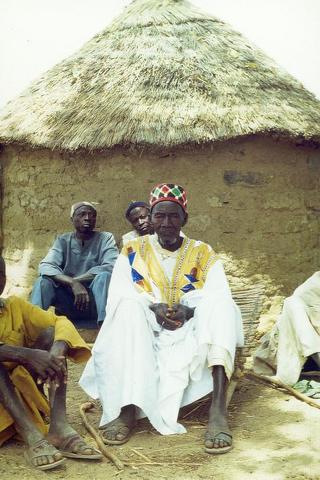
The Mossi are a Gur ethnic group native to modern Burkina Faso, primarily the Volta River basin. The Mossi are the largest ethnic group in Burkina Faso, constituting 52% of the population, or about 11.1 million people. The other 48% of Burkina Faso's population is composed of more than 60 ethnic groups, mainly the Gurunsi, Senufo, Lobi, Bobo, Bissa and Fulani. The Mossi speak the Mòoré language.

Idrissa Ouédraogo was a Burkinabé filmmaker. His work often explored the conflict between rural and city life and tradition and modernity in his native Burkina Faso and elsewhere in Africa. He is best known for his feature film Tilaï, which won the Grand Prix at the 1990 Cannes Film Festival and Samba Traoré (1993), which was nominated for the Silver Bear award at the 43rd Berlin International Film Festival.

The Burkina Faso national football team represents Burkina Faso in men's international football and is controlled by the Burkinabé Football Federation. They were known as the Upper Volta national football team until 1984, when Upper Volta became Burkina Faso. They finished fourth in the 1998 Africa Cup of Nations, when they hosted the tournament. Their best ever finish in the tournament was the 2013 edition, reaching the final.
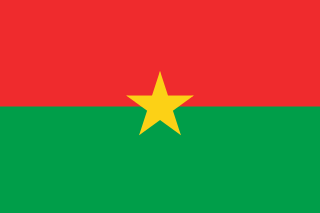
The culture of Burkina Faso in West Africa is also called the Burkinabé culture.
Articles related to Burkina Faso include:

Buud Yam is a 1997 Burkinabé historical drama film written and directed by Gaston Kaboré. It is the sequel to the film Wend Kuuni. As of 2001, it was the most popular African film ever in Burkina Faso.

Tishoumaren or assouf, internationally known as desert blues, is a style of music from the Sahara region of northern and west Africa. Critics describe the music as a fusion of blues and rock music with Tuareg, Malian or North African music. Various other terms are used to describe it including desert rock, Saharan rock, Takamba, Mali blues, Tuareg rock or simply "guitar music". The style has been pioneered by Tuareg musicians in the Sahara region, particularly in Mali, Niger, Libya, Western Sahara, Algeria, Burkina Faso and others.
Theatre of Burkina Faso combines traditional Burkinabé performance with the colonial influences and post-colonial efforts to educate rural people to produce a distinctive national theatre. Traditional ritual ceremonies of the many ethnic groups in Burkina Faso have long involved dancing with masks. Western-style theatre became common during colonial times, heavily influenced by French theatre. With independence came a new style of theatre inspired by forum theatre aimed at educating and entertaining Burkina Faso's rural people.
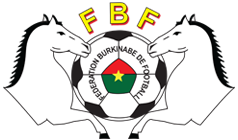
The Burkina Faso women's national football team represents Burkina Faso in international women's football. It is governed by the Burkinabé Football Federation. It played its first match on 2 September 2007 in Ouagadougou against Niger and won 10–0, the best result till today. Its next matches were against Niger (5–0) and Mali (2–4).
George Gund III was an American businessman and sports entrepreneur.
Firmin Boubié Bazié, better known by his stage name Agozo, is a Burkinabé singer.

Ansarul Islam is a militant Islamist group active in Burkina Faso and in Mali. It was founded by Boureima Dicko, also known as Ibrahim Malam Dicko, and it is the first native Jihadi group in Burkina Faso. The group cooperates closely with Jama'at Nasr al-Islam wal Muslimin (JNIM).
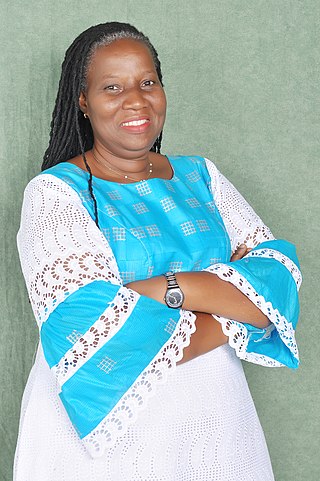
Pauline Mvele is an actress, director and screenwriter from Burkina Faso. Mvele is known for producing documentaries, and currently lives in Gabon. Her documentaries focus on issues such as HIV/AIDS in Africa, and the mistreatment of widows and prisoners in Gabon. In 2014 her film won best film at the Burundi Film Festival.
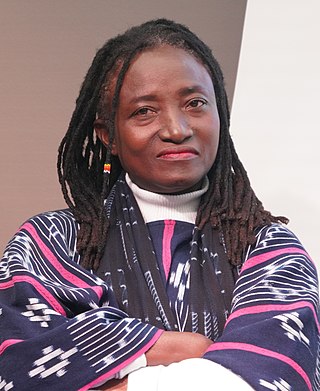
Odile Sankara is a Burkinabé artist, actress, playwright and director. She is the President of the Récréâtrales and a younger sister to the late revolutionary leader of Burkina Faso, Thomas Sankara.

Burkinabè Rising : the art of resistance in Burkina Faso is a 2018 long documentary film directed and produced by Iara Lee.

Malika Ouattara is a slam poet and musical artist from Burkina Faso, known as "Malika la Slameuse".
Sankara Is Not Dead is a 2019 French documentary film directed by Burkinabé filmmaker Lucie Viver and produced by Eugénie Michel-Villette. The film revolves around the young poet Bikontine who starts a journery from South to North after Burkina Faso's October 2014 popular uprising during the reign of former president Thomas Sankara.
References
- ↑ "Saturday Matinees Unite for Bissau". indyfilmlibrary.com. Retrieved 2024-02-19.
- 1 2 3 "Lessons from Lesotho". Beyond Nuclear International. 2020-09-28. Retrieved 2021-02-04.
- 1 2 3 Ings, Simon. "A strange mix of people keep sneaking into Chernobyl". New Scientist. Retrieved 2021-02-04.
- 1 2 3 "Dancing with activism: "Wantoks: Dance of Resilience in Melanesia" | Winter Film Awards". 2020-02-09. Retrieved 2021-02-04.
- 1 2 3 "10 African Films That Deal With Protest Culture & History". Young Afrikan. 2020-10-27. Retrieved 2021-02-04.
- ↑ "Can art bring a political change? Iara Lee discusses 'Burkinabe Rising'". Winter Film Awards. 2018-02-04. Retrieved 2018-06-04.
- 1 2 3 "Women filmmakers section features 28 films". New Age. Retrieved 2021-02-04.
- ↑ "Morocco: New Film About Western Sahara Resistance Produced". AllAfrica.
- 1 2 "Tidbits - May 14, 2015 - TPP; Stop-and-Frisk; White Americans and Police Accountability; Vietnam ,Debating the War; Remembering Jackson State Murders; more..." Portside. Retrieved 2021-02-04.
- ↑ "Greenpeace Annual Report 2009" (PDF). Greenpeace.org.
- ↑ Orton, Karen (2012-08-18). "Q&A / Politics: Iara Lee". Dazed and Confused.
- ↑ "MetroActive Movies | Iara Lee". Metroactive.com. Retrieved 2012-01-31.
- ↑ "Tiburon International Film Festival". Tiburonfilmfestival.com. 2011-04-15. Retrieved 2012-01-31.
- ↑ "5th Annual International Red Rock Film Festival — Southern Utah". Redrockfilmfestival.com. Retrieved 2012-01-31.
- ↑ "2011 Atlanta Underground Film Festival Awards - Be a part of the 2012 AUFF - film festival submissions accepted now!". Auff.org. Retrieved 2012-01-31.
- ↑ "Cultures of Resistance Awards". Caipirinha Productions.
- ↑ "BBC - World Service the Strand Archive - 11/10/2011". The Strand. BBC World Service. Retrieved 2011-10-11.
- ↑ Certo, Peter (2013-08-30). "The Suffering Grasses: Remembering the Other Syria". Foreign Policy in Focus.
- ↑ Saleh, Tariq. "Cineasta brasileira retrata desespero em campo de refugiados sírios". BBC Brasil.
- ↑ "The Suffering Grasses - Iara Lee". Frontline Club.
- ↑ Sahara Press Service (El Aaiun) (2015-03-17). "Morocco: New Film About Western Sahara Resistance Produced". allAfrica.com. Retrieved 2015-12-24.
- 1 2 "Politically conscious Music from Malawi". Consciousness.co.za Magazine. 2020-06-22. Retrieved 2021-02-04.
- ↑ "UNITE FOR BISSAU: AGROECOLOGY AND FEMINISM IN GUINEA BISSAU". winterfilmawards.com. Retrieved 2024-02-19.
- ↑ "Hich Kas: Bunch of Soldiers and Beyond". Cultures of Resistance. Archived from the original on 2014-03-27. Retrieved 2010-04-12.
- ↑ "Persian's Underground Cinematic Arts : About us". Puca.ir. Archived from the original on 2009-12-21. Retrieved 2010-04-12.
- ↑ "Belo Monte Dam". International Rivers.
- ↑ "Battle for the Xingu". International Rivers.
- ↑ "Karbi Youth Festival honoured with Cultures of Resistance 2023 Award". assamtribune.com. Retrieved 2024-02-19.
- ↑ Siddique, Haroon. "Gaza flotilla attack: activist releases new footage". The Guardian. Retrieved 10 October 2013.
- ↑ Pearson, Erica. "Tribeca filmmaker, activist Iara Lee takes viewers within Israeli raid on Gaza flotilla". New York Daily News.
- ↑ "Director Iara Lee". Cultures of Resistance. Retrieved 2012-01-31.
- ↑ "UNAFF 2009: Battle for the Xingu". Unaff.org. Retrieved 2012-01-31.
- ↑ "Battle for the Xingu | 2009 Starz Denver Film Festival | Iara Lee | USA". Denverfilm.org. Retrieved 2012-01-31.
- ↑ "Saturday Matinees Unite for Bissau". indyfilmlibrary.com. Retrieved 2024-02-19.